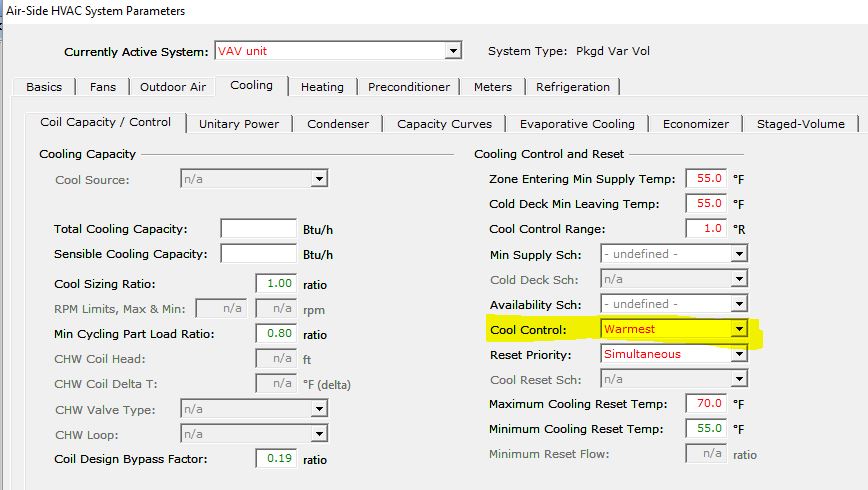How to model constant air volume system using eQUEST?
How do you model constant air volume system using eQEST? As I know,most of eQUEST users model constant volume system as VAV system but set the minimum airflow setpoint to 1.0.And I think this method is not appropriate,because the VAV system adjusts the cooling and heating load by varying the supply air volume but keep the supply air temperature constant, set the minimum airflow setpoint of VAV system to 1.0 means that the supply air volume and temperature are kept constant,however,the constant air volume system adjusts the heating and cooling load by varying the supply air temperature but keep the supply air volume contstant. I always model the constant air volume as single zone reheat.And I want to kown what your solution to this problem is!
Any suggestion?Thanks!







